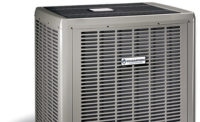
Sensors and monitoring equipment can be embedded in the rooftop unit (RTU) controller to detect problems early and alert maintenance personnel. However, until now, technologies for online fault detection and diagnosis (FDD) have been expensive to apply, have not been tested in the field, and have not been able to handle multiple simultaneous faults.
Researchers from Purdue University and Field Diagnostic Services Inc. have now developed what they term a cost-effective, automated FDD technology that is sensitive to early signs of equipment malfunction and able to detect more than one problem at a time. The new system is designed to alert the equipment operator to potential problems and recommends priorities for scheduling maintenance. These capabilities enable FDD systems to cut energy costs, extend equipment life, and help provide a healthy, comfortable environment.
With energy and equipment savings, payback can take less than one year, they said. Meanwhile, several products and services incorporating the new features are being developed for commercial applications.

FEATURES AND BENEFITS
According to the research team, an FDD system uses sensors embedded in the RTU controller to monitor conditions at various points in the cooling cycle. The system's logic uses data such as ambient drybulb temperature and the dry- and wetbulb temperatures of return, mixed, and supply air to predict normal operating temperatures: evaporator temperature, suction superheat, condenser temperature, condenser subcooling, compressor hot gas temperature, and differences in condenser and evaporator air temperatures.The FDD system then calculates the difference between monitored and expected temperatures and analyzes the data to determine what problems may be imminent and what actions should be taken, said the researchers. The device communicates this diagnostic information to the facilities manager (see Table 1).
According to the research team, the new FDD system can detect a variety of problems in compressors, heat exchangers, expansion valves, economizers, and other components. Field tests have shown not only how common these problems are but also how successful an FDD can be at detecting them. Roughly 71 percent, 15 of the 21 systems studied, had some kind of problem that affected performance, they said. Filter/drier restrictions plagued 11 of the systems, 10 had a low refrigerant charge, and eight suffered from both low charge and filter/drier restrictions, they pointed out.
Researchers estimated the savings potential of FDD systems (Table 2) based on these test results. Annual net savings ranged from about $400 to $1,000, with payback periods of less than one year. The analysis identified numerous opportunities for cost savings, including:

Improvements in RTU performance can also result in improved occupant comfort and health, said the researchers. Though harder to quantify, those benefits may be most important, they pointed out, given the potential impact a malfunctioning system can have on employee performance in an office, on student performance in a school, or on customer retention in a retail outlet.
In the end, FDD systems can be used with RTUs found in a variety of light commercial buildings, such as restaurants and retail stores. The technology can be used in retrofit applications or be incorporated at the factory in new RTU products.
In California, FDD technology is not currently covered by Title 24. The results of this project, however, may lead to including FDD as a prescriptive technology or as a candidate for credits in the 2008 state energy code, researchers pointed out.
WHAT'S NEXT
During the next two years, the research team that developed the technology during the first phase will be working on commercialization. They plan to collaborate with engineers at Honeywell on product production and setting up extensive field demonstrations during the final project year. The team intends to monitor FDD devices on a total of 60 air conditioners at 12 buildings. FDD builds on technology used in the HVAC Service Assistant system that's now available from Honeywell (http://acrx.com/serviceassistant.cfm).Enhancements include an online user interface and exclusive use of temperature sensors for diagnostics, which makes installation easier. Honeywell is considering integrating the FDD technology into its more-advanced product offerings.
Reports documenting this project and providing more methodology details may be downloaded from www.energy.ca.gov/reports/2003-11-18_500-03-096-A1.pdf.
Publication date: 03/13/2006


